
People of the New Moon - A Year in the Life of Curlew Life
For me, one of the things that's special about the Highlands is a mix of independence and resilience. These things are tied together in a quiet informality, a liberty or ease with one’s surroundings that’s to be nurtured and celebrated in the face of a lot of changes in recent years.
I'm focused on engaging with people who are quietly committed to improving their own place. In this instance that’s a conservation related story, demonstrating how people work with and for nature, not against it. I’m interested in positive examples, not negative portrayals.
Beginning in May 2022, local photo journalist David Lintern spent a year documenting the Curlew Life project at Insh Marshes. Insh Marshes is an RSPB reserve near Kingussie, in the Cairngorms National Park, while Curlew Life is a 4-year, nationwide project aiming to stem population collapse in the British Isles. Curlew populations in Wales and Ireland are critically at risk, and in England, ‘head starting’ may become a last resort for a species clinging on in the field margins, having lost most of its habitat to post war agricultural intensification.
Insh is different. It's considered one of the best places in the British Isles for breeding Curlew, albeit with its own distinct challenges. David shadowed both staff and volunteers, those doing the quiet work to improve habitat for the birds, and themselves, in the long run. Nearly all are based locally and illustrate just how diverse the modern countryside really is.
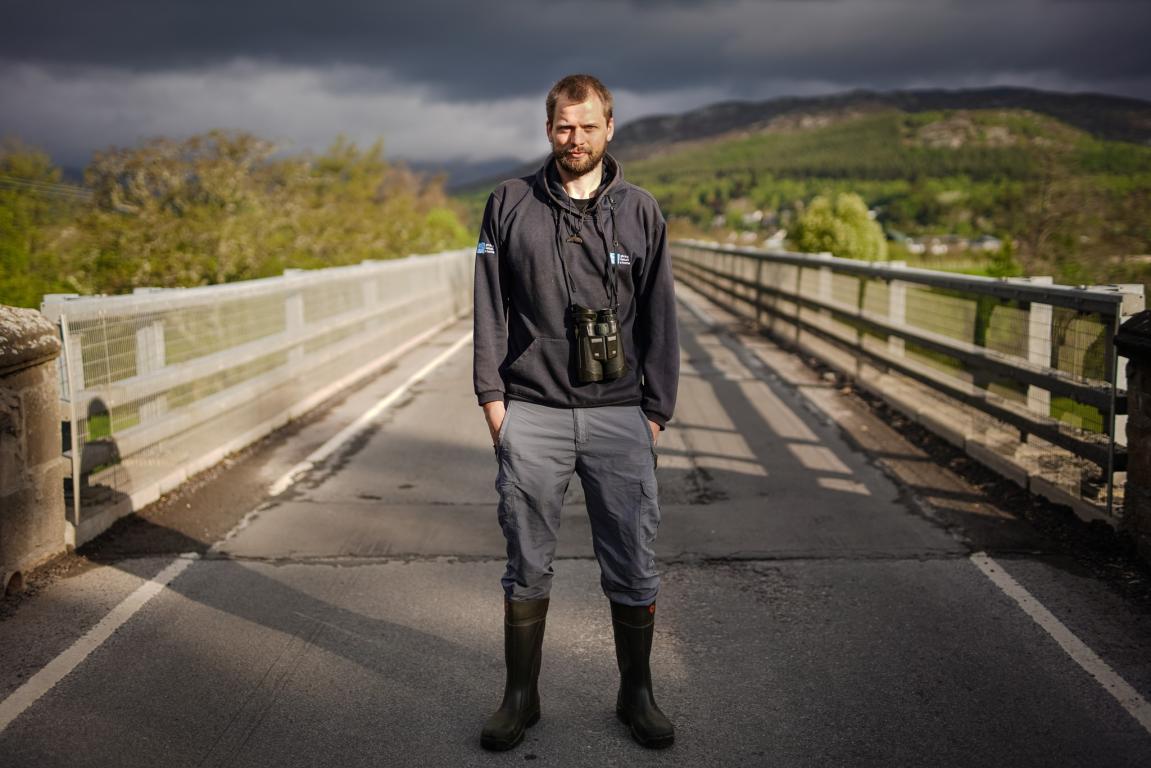 Thijs Claes.
Thijs Claes.Image provided by David Lintern
Curlew Life Project Officer for RSPB Scotland Insh Marshes, Thijs Claes.
I may be the project officer, but I’m not especially into Curlew more than anything else. I don’t have an emotional attachment to them. I love everything-an aspen tree, the other birds, all of nature-the whole ecology. My goal is not to have 200 pairs of Curlews on Insh Marshes, like some kind of Curlew farm. We just need the ones that come here to be successful. My goal is to have a stable population, and the key is getting the habitat right.
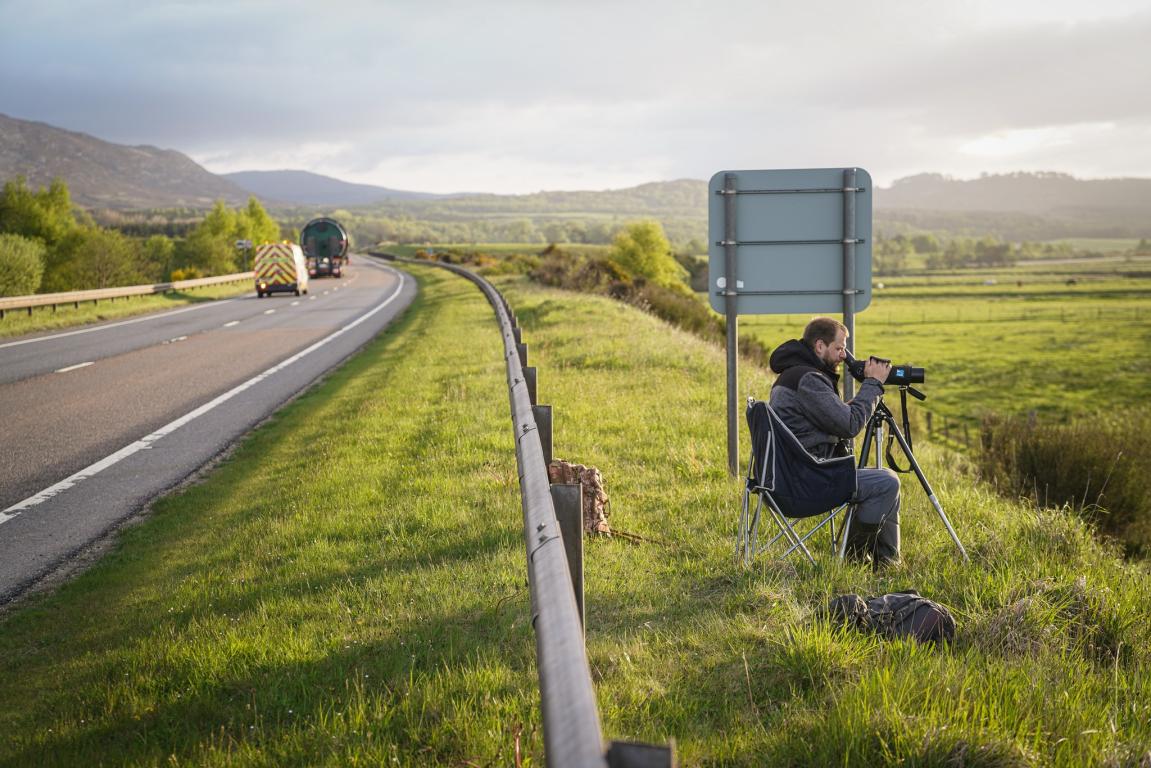 Ruthven, Badenoch and Strathspey.
Ruthven, Badenoch and Strathspey.Image provided by David Lintern
An early season breeding bird survey overlooking Ruthven. Curlew are territorially loyal. The best habitat is picked, defended by the males, who then are chosen by the females. They will return to the same nest annually if the habitat remains favourable, although females don’t always pick the same mate. The male and female birds share childcare, doing 12-hour shifts on the nest. David meets Thijs at 5.30am, to be in place for 6am, the time of the shift change.
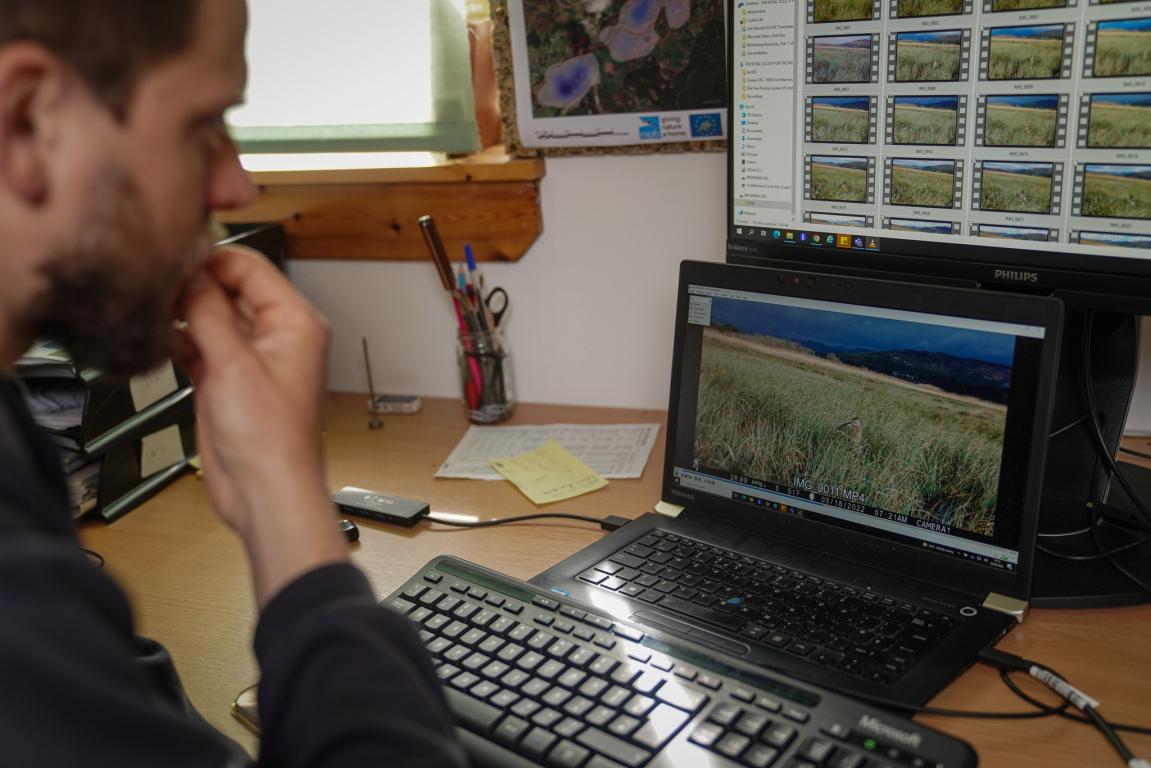 Correlating nest site data.
Correlating nest site data.Image provided by David Lintern
Correlating nest site data. Back at the office, Thijs matches video clips with incubation temperature readings. A temperature gauge, the size of a watch battery, gives a thermal record of the nest alongside video footage shot at 15-minute intervals. There’s a thermal spike just before an egg hatches, and a drop after. The aim is to build an accurate picture of the best breeding habitat for the birds on the marsh, so that it can be expanded further afield. Ring tagging, and from 2023, radio tracking, is also used to determine how many chicks survive, and where the birds move to after fledging, a big question for the project. Thijs:
I’m interested in which features in the habitat create a higher chance for nests to survive. That’s when we start to think about river restoration, creating a functioning flood plain, a diverse habitat so the nests are more difficult to find by predators, the chicks can hide better, and they find food close to their nesting areas.
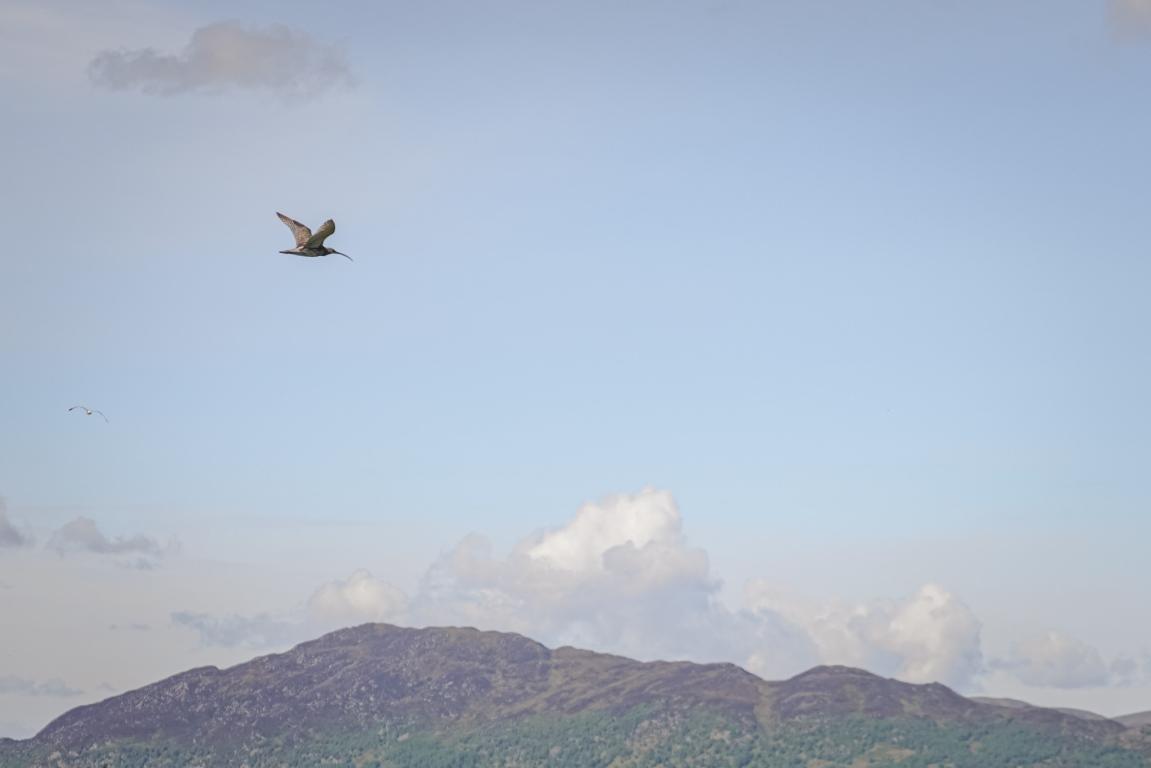 An adult parent circles and sounds the alarm.
An adult parent circles and sounds the alarm.Image provided by David Lintern
An adult parent circles and sounds the alarm. One of the most reliable methods of monitoring is a simple walk through, counting the numbers of birds alarm calling. This activity is scheduled carefully and rotated to minimise disturbance. Thijs:
We have lots of measures in places to try and minimise the impact of our scientific processes - we try to ensure we don’t visit the same nest too often, don’t stay too long when we do, and we practice our techniques for placing cameras to make them as efficient as possible.
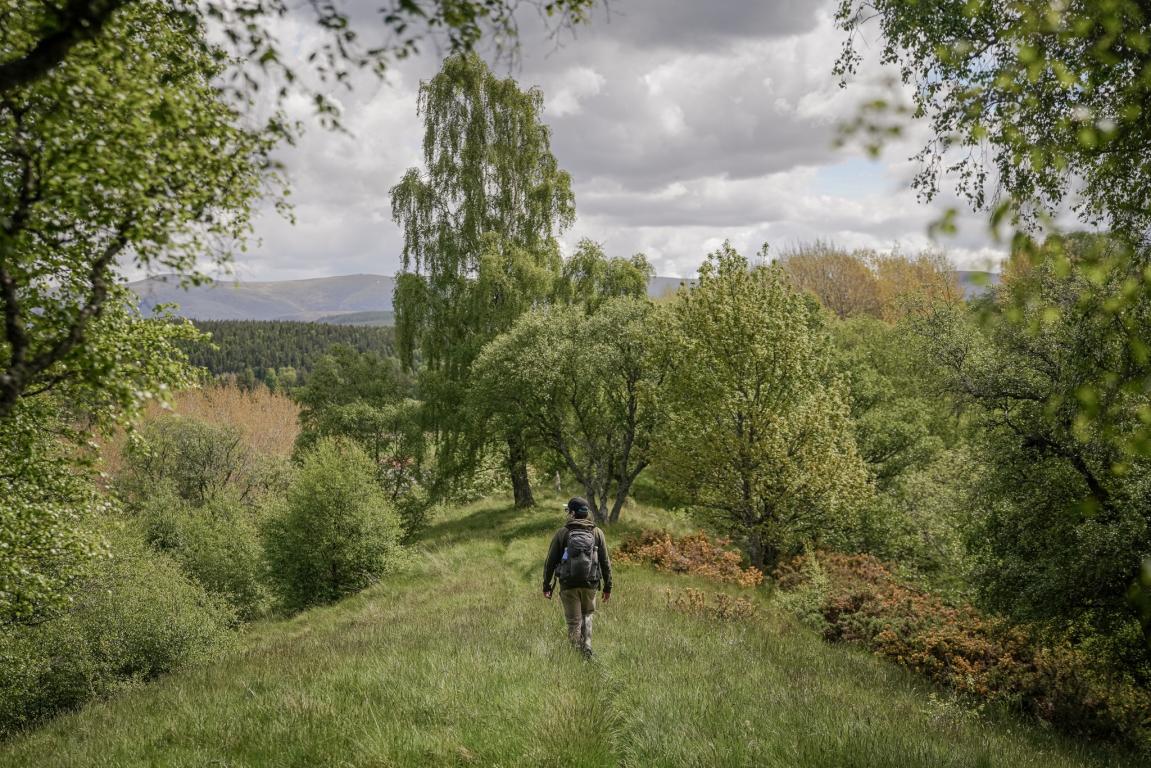 Nolan finishes his patrol on the braes at the edge of the marsh.
Nolan finishes his patrol on the braes at the edge of the marsh.Image provided by David Lintern
Nolan finishes his patrol on the braes at the edge of the marsh.
I just love being outside, I think. What’s drawn me to this is a chance to learn about birds, which is my passion, but learning about everything else too - the science, biology, how it fits together. Learning makes me feel more connected to nature, a part of a whole. There’s a stress releasing side to it too - it’s time away from all our human drama - so there’s that mental health component. And you’re exposed to other specialists as well, doing this work - everyone has their own thing, their own particular passion or expertise.
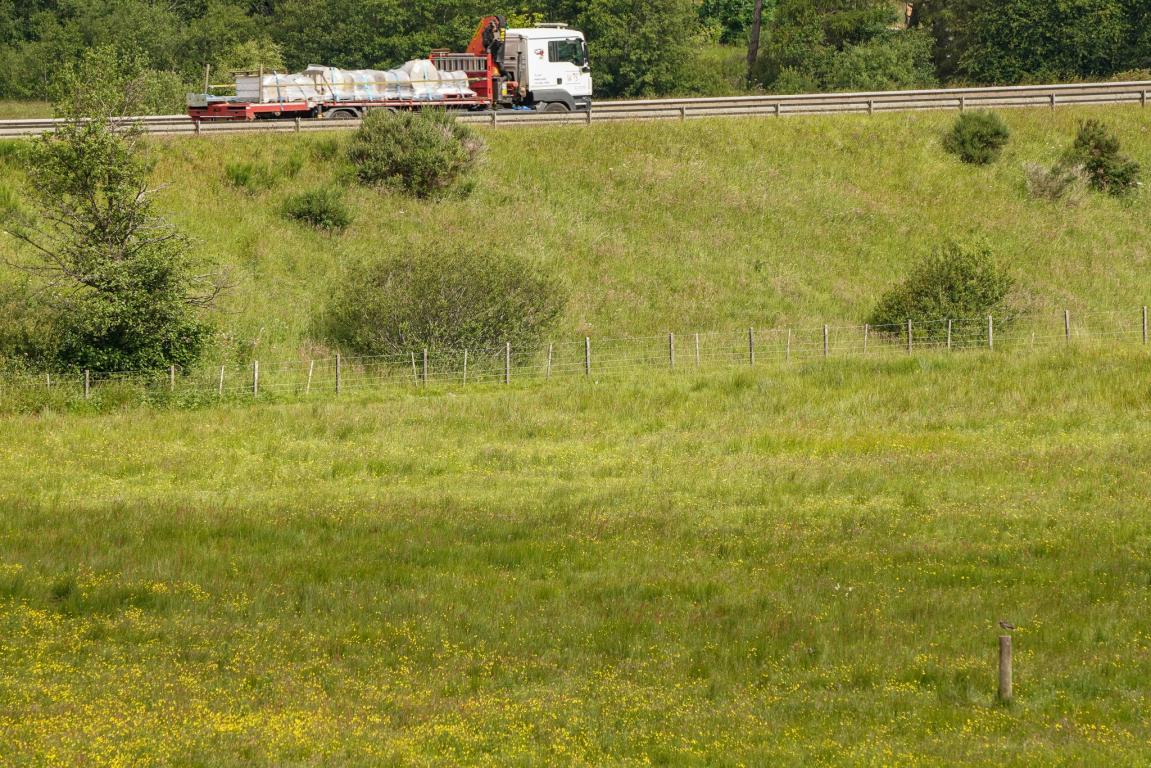 A Curlew parent watches over one of its chicks close to the A9.
A Curlew parent watches over one of its chicks close to the A9.Image provided by David Lintern
A Curlew parent watches over one of its chicks close to the A9, a busy trunk road which links the city of Inverness with the Central Belt. Ruthven is one of the best feeding areas for the Curlew at Insh Marshes, and the planned dualling of the A9 will cut into it. There are plans for mitigation on the other side of the road which will provide new land suitable for waders, although it will be fragmented from the main reserve.
 Historic Drainage systems.
Historic Drainage systems.Image provided by David Lintern
Historic drainage. Much of the land was previously drained and grazed. The marsh is still known as ‘the meadows’ locally by some older people, who remember hay cutting before it became a reserve. Foot drains, cut with a pickaxe, still crisscross the land, as well as wider, deeper ditches like this one. Some are now blocked off, an early intervention by the RSPB. Thijs explains:
They are now effectively long ponds, not technically draining anymore. Open water is a good habitat for animals, but ideally, the drains wouldn’t be as straight, and they would be shallower. These are a metre deep, with another metre of slurry underneath. We use them as part of grazing management – as wet fences, if you like.
Other ditches, like the one shown here, are still open.
Rewetting the floodplain is a major engineering challenge. The RSPB are unable to correct some of the historic diversion of burns outside the reserve, but they are working to naturalise sections of the adjacent rivers Spey and Tromie. Thijs:
We know more flash flooding is coming, that climate change is here. It’s not about replicating the past, we are looking to make this place more resilient for the future.
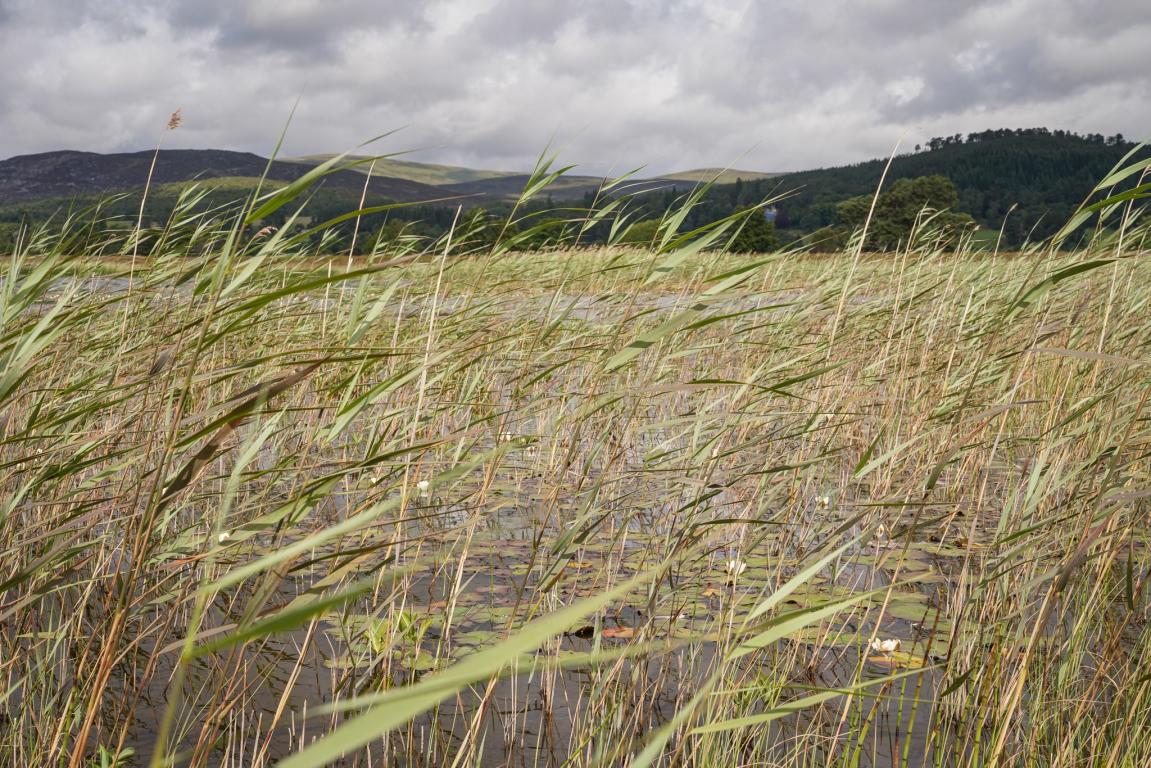 Reeds, sedges and waterlilies upon a lochan.
Reeds, sedges and waterlilies upon a lochan.Image provided by David Lintern
Reeds, sedges and waterlilies on one of the lochans adjoining a drier area. Reeds tend to create a lot of leaf litter which can shade out more vulnerable plant species, and thereby reduce the fenland habitat preferred by Curlew. Topping (the cutting back and smashing of reeds and rushes) is sometimes carried out by machinery, other times by grazing animals.
 The Konik pony herd at Insh.
The Konik pony herd at Insh.Image provided by David Lintern
The Konik pony herd at Insh. Theo explains the ecological role the horses play:
Out on the Marsh, the reedbed was out competing the ‘quaking bog’ and transition mires. Koniks are known to do well on wet ground, and they love eating reeds!
Hooved animals are brilliant at mashing up the ground, disturbing the rhizome and keeping the reedbed at bay. Horses are not ruminants like cows, they eat for 16-18hrs a day. Ideally, we’re after a mix of different animals trampling, grazing, dunging and fertilizing, not all deer or sheep or cow. That’s when you get the mosaic of habitats happening. We use Highland cows and sheep on other parts of the marsh.
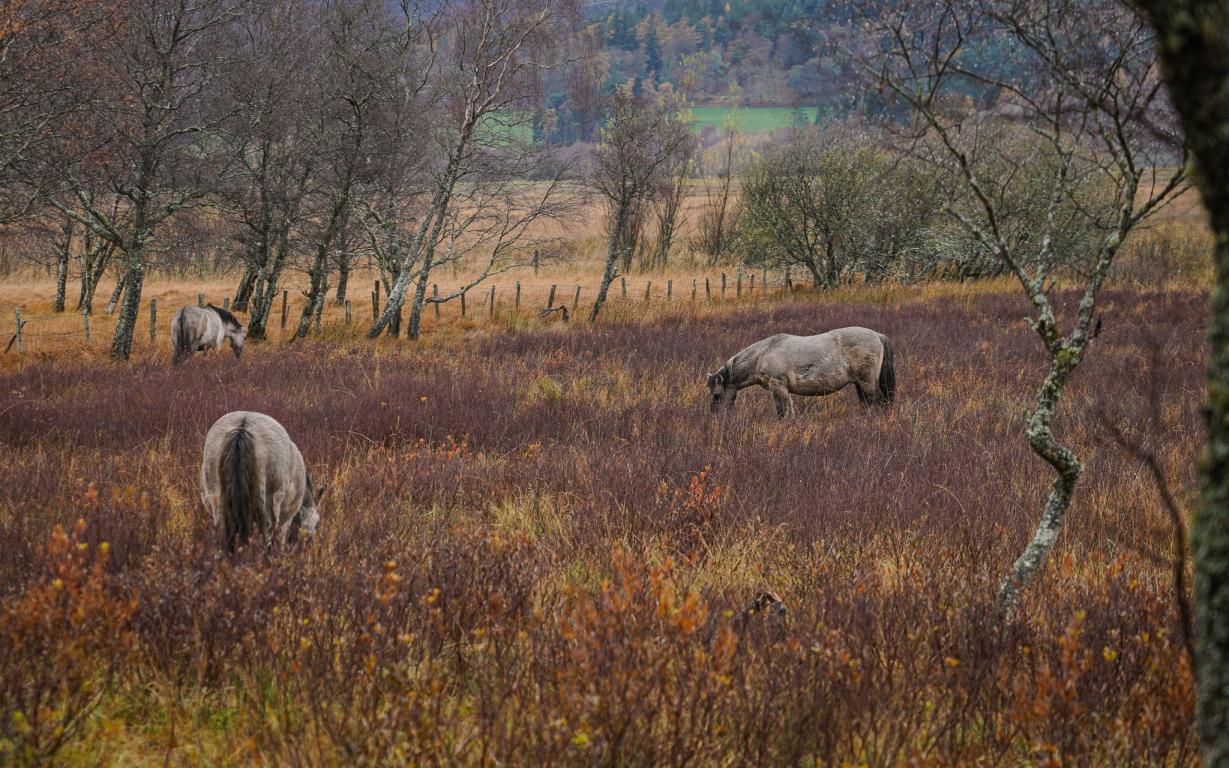 Herd at work on the marsh.
Herd at work on the marsh.Image provided by David Lintern
Herd at work on the marsh. Theo is passionate about his charges and has developed a way of working he terms “a horse led perspective”. He has learnt to trim hooves and is training as an equine podiatrist, to alleviate some of the issues caused by constant exposure to wet marshland, but otherwise practises minimal intervention.
The more you spend time with these animals, the more you understand their social relationships, which means you can move around them safely and with minimal disturbance.
I absolutely love watching this herd develop and grow in their experience - learning where to walk, which areas are wet, where they avoid, what they eat at different times of year. They will eat thistle, if they need what’s in it.
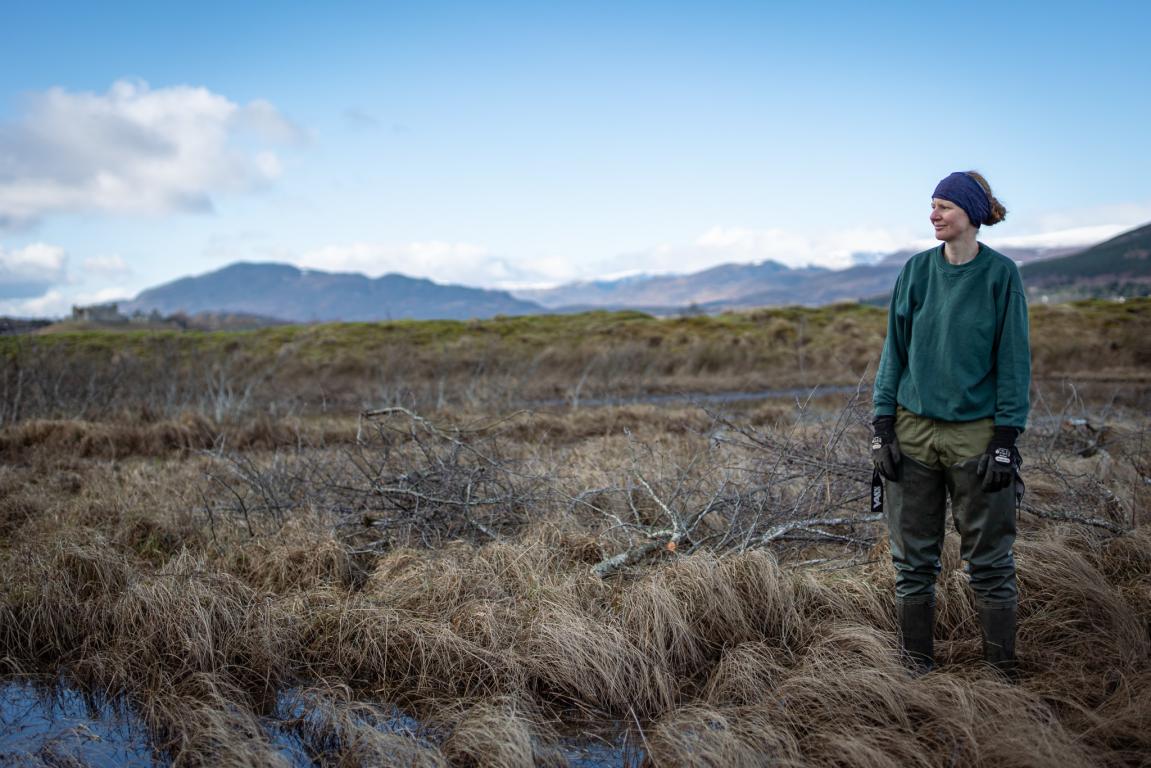 Ellie Ames.
Ellie Ames.Image provided by David Lintern
Ellie Ames is one of a small number of volunteer interns David met over the course of the year. RSPB run a 6-month residency which provides volunteers with accommodation, while they work for the organisation. Ellie stays at their cottage in Insh.
It’s a really good base, and an opportunity to hopefully build up enough experience and then apply for something paid in the future.
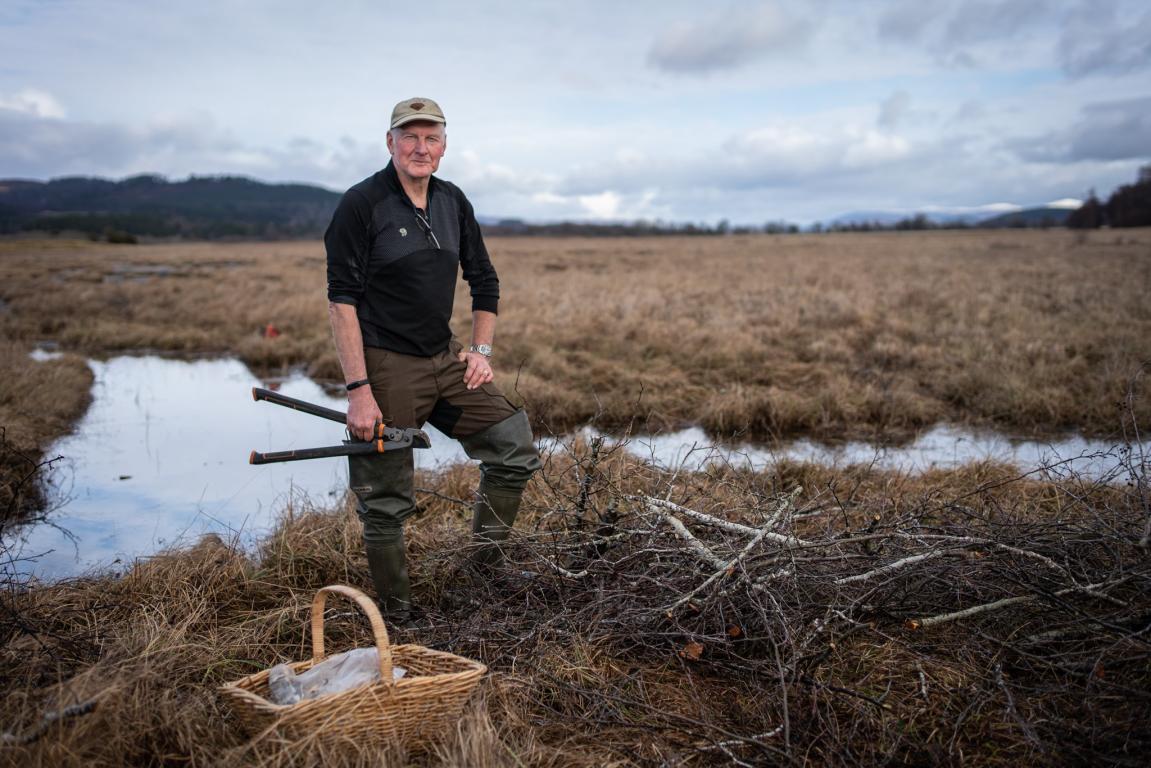 Colin Maclennan.
Colin Maclennan.Image provided by David Lintern
Colin Maclennan is ‘a professional volunteer’, according to his friends on the marsh, and has done much to assist with Curlew, Capercaillie and butterfly conservation locally. He is part of a team working with farmers and other landowners to pilot outcomes-based approaches in Scotland (POBAS), which it is hoped may help provide new environmental incomes in agriculture, post Brexit. "We’re speaking to locals, lots of landowners, farmers and stalkers”, he said, of his new involvement with a project to help Golden Eye nesting boxes. A recent retiree from the construction industry based in Glasgow, he's clearly a huge advocate and boon to the local conservation cause.
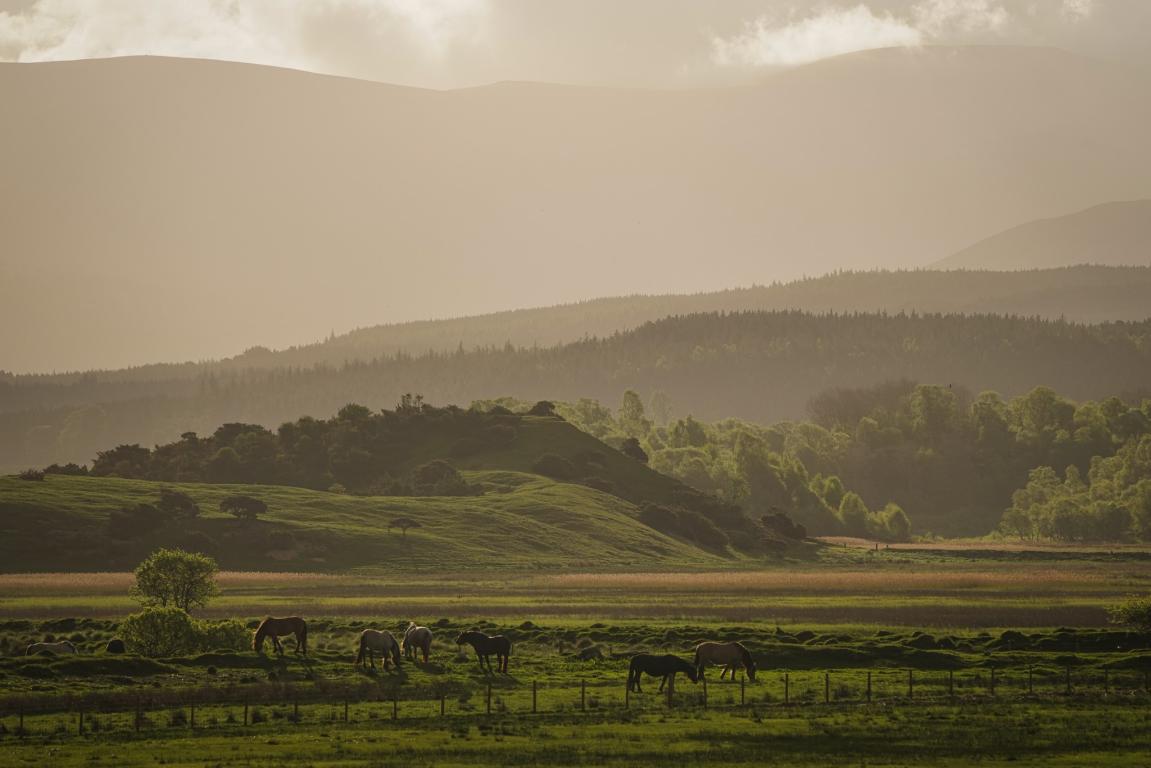 Insh Marshes, Cairngorms National Park.
Insh Marshes, Cairngorms National Park.Image provided by David Lintern
A small part of the huge RSPB reserve at Insh Marshes, in the shadow of the Cairngorm mountains. The reserve grazes sheep, cattle and horses to help create better wetland habitat, using their own herd of Konik ponies, and in partnership with local graziers, whose Highland ponies are pictured here
 Early season breeding bird survey at Invertromie.
Early season breeding bird survey at Invertromie.Image provided by David Lintern
Early season breeding bird survey at Invertromie. We are looking for a nest that Thijs observed being close to hatching two days prior. Perched on a hillside a few hundred metres away,This can tell from the adult behaviour that the chicks are now hatched. The parents are nervous, calling alarms. We approach the nest site swiftly and carefully and remove the video card and thermometer from the area.
Insh is one of the best breeding sites for Curlew in mainland Scotland, but we still have a few questions to answer in order to know if Curlew are doing OK here. One of the main questions is what happens with the fledglings? We know we have good numbers of adult pairs; we know we have good hatching success, but we know less about what happens afterwards.
We are concerned about a possible ageing population. Curlews are long lived birds-up to 30 years old-and we know from previous research that adult mortality is fairly low in Scotland, but that elsewhere in the UK the population is crashing. The worry is that this may happen in Scotland too. We may have healthy numbers of breeding pairs now but if the chicks don’t survive then eventually the Scottish population will crash too.
 Volunteer Nolan checks a predator camera.
Volunteer Nolan checks a predator camera.Image provided by David Lintern
Volunteer Nolan checks a predator camera. Nolan volunteers 2 days a week on the reserve. His job is to set up and maintain the cameras that record every predator sighting, ranging from Foxes and Badgers to Pine Martin and even domestic cats and dogs. In the summer, he is part of the avian predator monitoring team, a task done by eye and strictly recorded and rotated across the marsh. He also does nest monitoring, but from a distance (his license doesn’t extend to handling). Finding the nests is particularly difficult – the chicks are tiny, and the nests are often hidden in tussocks, but it’s something that Nolan has an aptitude for – he found at least 1/3 of the nests on Insh in 2022.
We walk Nolan’s regular beat, swap out SD cards, check batteries and make sure that any grazers have not moved the cameras out of position. The cameras are sited at places of high traffic - a causeway, ‘the mound’, a bridge over a ditch - all places that animals are more likely to use as thoroughfares. “Today is really just a housekeeping job, collecting the cards, and then banking the data back at home, building the data slowly over the 4-year project life span”, he explains.
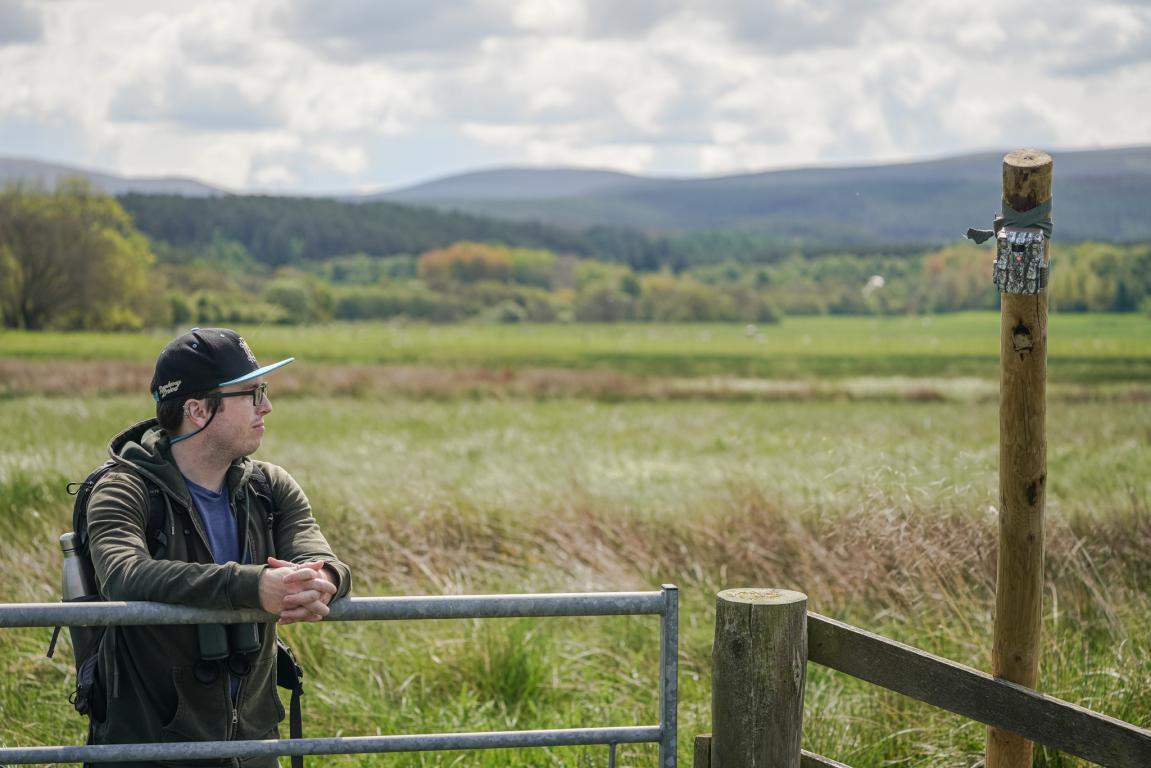 Nolan scans the horizon for nesting birds.
Nolan scans the horizon for nesting birds.Image provided by David Lintern
Nolan scans the horizon for nesting birds.
I really wanted to learn in depth about one species, about the behaviours. One of the things they do to reduce avian predation is to break up the silhouette of the nest from the air by laying grass on top of the eggs. So you see the adults picking grass from behind and laying it on top, a form of ariel camouflage.
The adult pairs also operate in shifts to incubate the eggs, but rather than draw attention to the nest, one will walk in from a way off, while the other moves away stealthily. This granular detail I didn’t know much about. I could identify the birds and their calls but didn’t know their behaviour. You even get to know individual birds or pairs over time, too. Having done this work, watching the birds and knowing what they are doing is uniquely valuable to me.
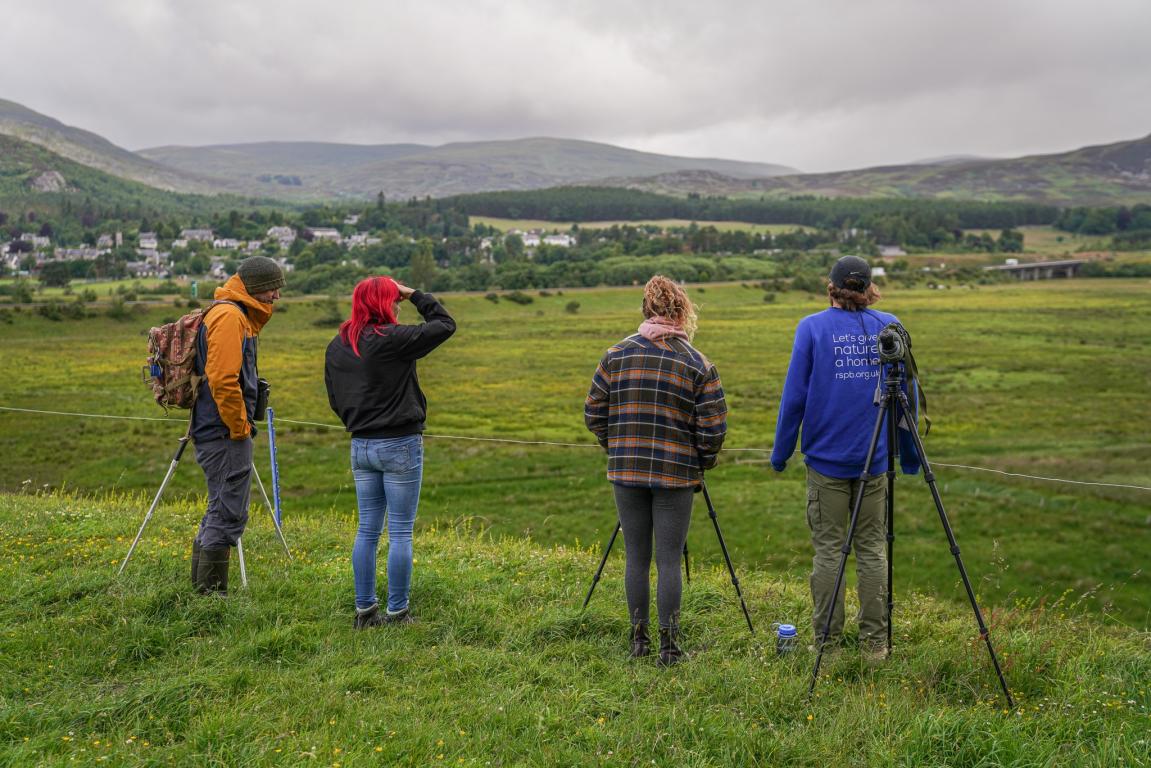 Ruthven Barracks, Badenoch and Strathspey
Ruthven Barracks, Badenoch and StrathspeyImage provided by David Lintern
A ‘Curious Curlew’ open morning at a local landmark and viewpoint, Ruthven Barracks. Project officer Thijs has been running public engagement events to encourage local people to take an interest and get involved. Local photojournalist David originally met Thijs at one of these events. Thijs:
Another part of the work is about getting the community involved with some of the monitoring and volunteering, increasing awareness of the fact that Curlew are rapidly declining in the UK and at the same time appreciating we have this amazing place, which is great for Curlew, on our doorstep. Advocates for this type of conservation work are very much needed at the moment.
 Thijs wades through the mire.
Thijs wades through the mire.Image provided by David Lintern
Thijs wades through the mire where marsh meets woodland. It’s widely assumed that woodland is disastrous for Curlew and other waders, because it provides cover and perches for predators, but the scale of the marsh reserve may be an overriding factor. More breeding birds means more eyes in the sky, and predators are ‘mobbed’ en masse. Thijs explains:
If you have a lot of waders nesting in an area, and if a predator walks or flies through that area, it’ll get hammered by loads of different species. That includes gulls (sometimes seen as a simple predator of ground nesting bird eggs), crows, Lapwing - they will work together to chase that predator away. Those animals may be hungry, but they will not want to be there! This is one of the spectacles of nature you can witness on Insh Marshes, and a reason so many waders return to the site, because there is safety in numbers.
Conversely, it may also be why predation pressure is a much larger issue in more fragmented areas, like farmland fringes, or in drier moorland areas - because the population density is so much lower, and the predators have an easier time. Get your breeding habitat right, and on a large enough scale, and predation becomes less of an issue.
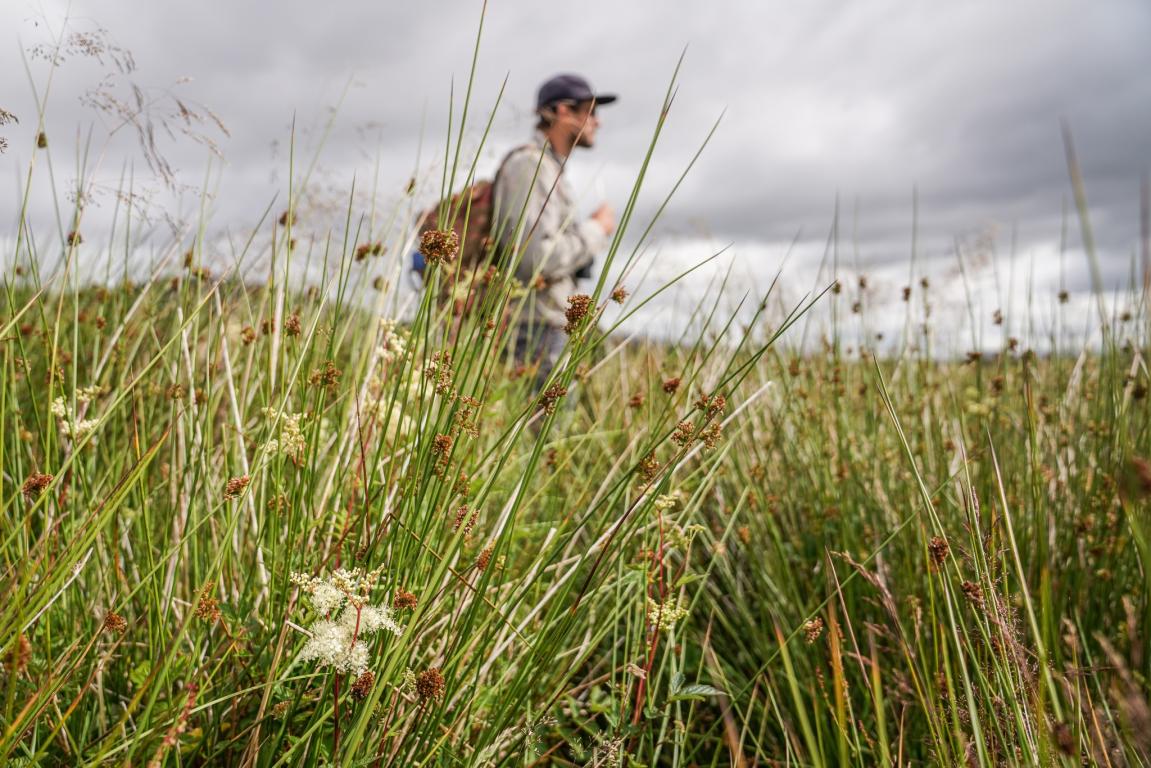 Meadowsweet flowering in the grassland.
Meadowsweet flowering in the grassland.Image provided by David Lintern
Meadowsweet, a fenland indicator species. The 5th and final breeding bird survey in the summer is a good opportunity to learn more about the different compartments, or areas within the marsh, and the different plants that constitute a habitat that is more or less favourable for Curlew. Meadowsweet grassland indicates a wetter environment. There is a noticeable difference on one side of a drain to another. One side is a grass monoculture, the other is spongier, with a greater variety of sedges and sphagnums. Curlew prefer wetland because of this structure, which provides more food and makes predation more challenging. It’s simply easier for egg and chick eating mammals to go elsewhere.
Thijs is upfront about the need to increase wetland, not only to improve farmland.
The birds need the variety in vegetation, the structure, in cover and open ground, in availability of food, and you need a functioning floodplain to provide that. If you don’t have that, you need to provide it artificially, which is what a lot of farmers are trying to do. It’s incredibly tricky to do alongside running an economically viable farm. In that situation, how do I balance a risk of trampling with my income? I definitely understand the struggles of a farmer trying to do both. In my view, the best and most sustainable way is to provide habitat that does this work for you instead of having to do it yourself.
 Theo Jones with one of the reserve’s own Konik ponies.
Theo Jones with one of the reserve’s own Konik ponies.Image provided by David Lintern
Theo Jones with one of the reserve’s own Konik ponies. Theo has been working with the horses for around 3 years, after learning to care for Welsh mountain ponies on an RSPB internship. At Insh, they began with 5 horses in 2019, and have slowly built up the herd. They are now at 18 with plans for 23 in total.
The first year we saw pairs of Redshank and Lapwing, and the following year, breeding Curlew. The goal of our specific project – the EU LIFE 100% Favourable project - was to improve the condition of the marsh vegetation, but we’re seeing wildlife benefits too.
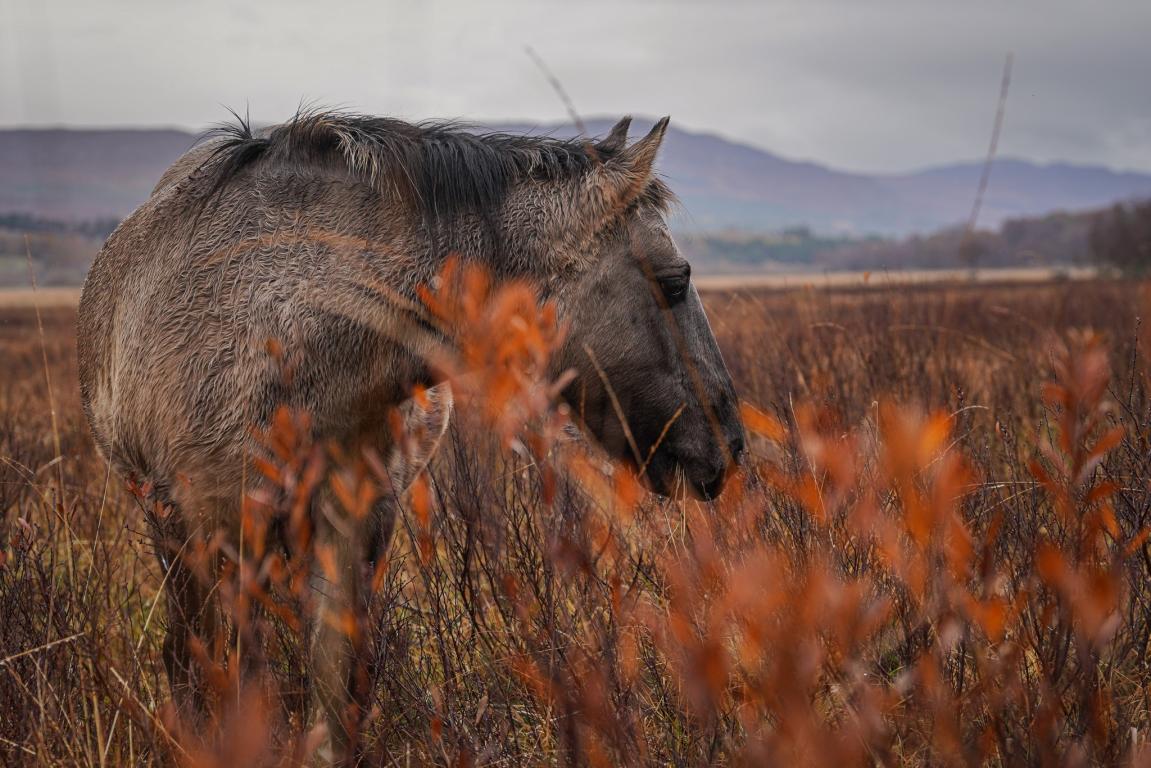 A konik pony in the grasslands.
A konik pony in the grasslands.Image provided by David Lintern
Origin story.
There’s a bit of a myth about the Konik being related to the Tarpan, the extinct European Wild Horse. They don’t share any of those genetics, but they are lovely animals and are a brilliant ecosystem engineer. Essentially, it’s a Polish farm horse - used quite widely in UK conservation now - which has a placid temperament and is not too tall. Originally, they would have been working horses on smallholdings.
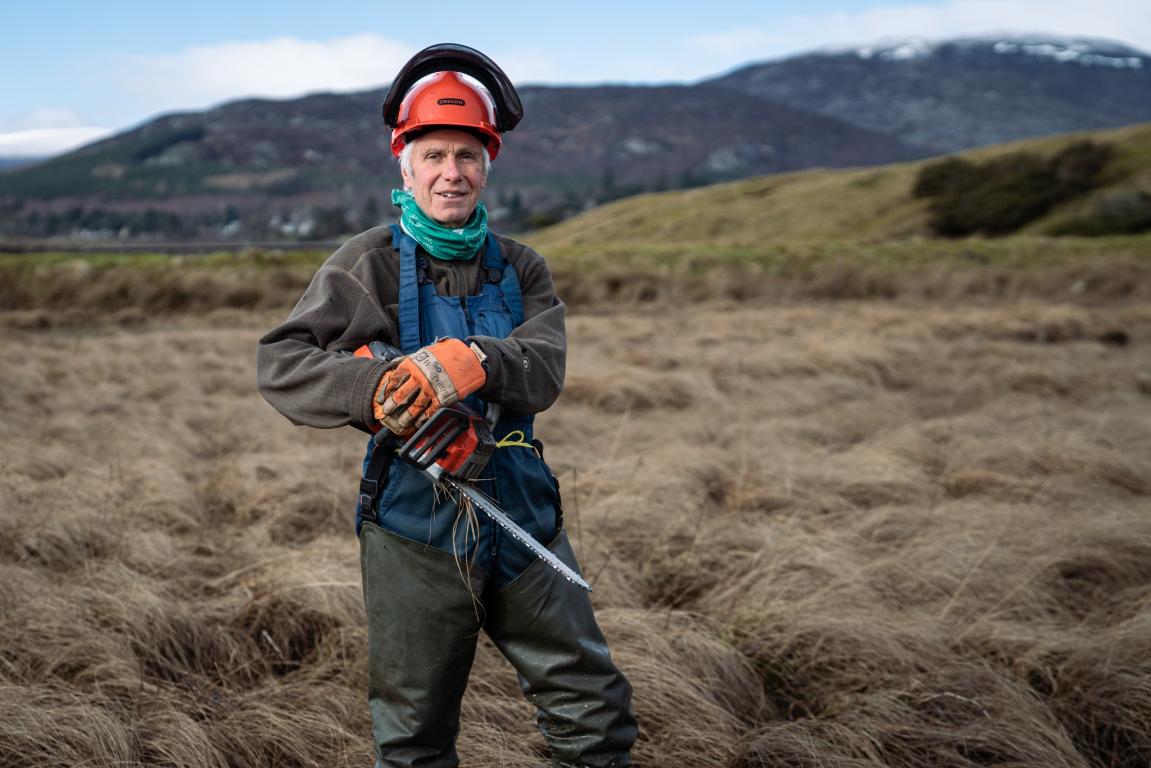 Pete Moore takes a rest from scrub control.
Pete Moore takes a rest from scrub control.Image provided by David Lintern
Pete Moore takes a rest from scrub control. Over the winter, Thijs and his team refocus efforts on habitat maintenance and creation ready for the coming breeding season. Some scrub is removed where it would otherwise provide cover for predators or begin to dry out the wetland. As we work, we hear 1 or 2 Curlews call out, already back from overwintering on the northeast coast.
Pete is the recently retired warden of Insh Marshes reserve and lives in nearby Grantown.
I really like the practical work, and it keeps me active, so I’m back once a week. And it’s great to have time, now, to deal with this scrub. It had been bugging me for years, but I was always on calls or in meetings. It’s nice to be able to hand over control, too - I’m not precious about that - I’m happy to be directed as to what needs doing.
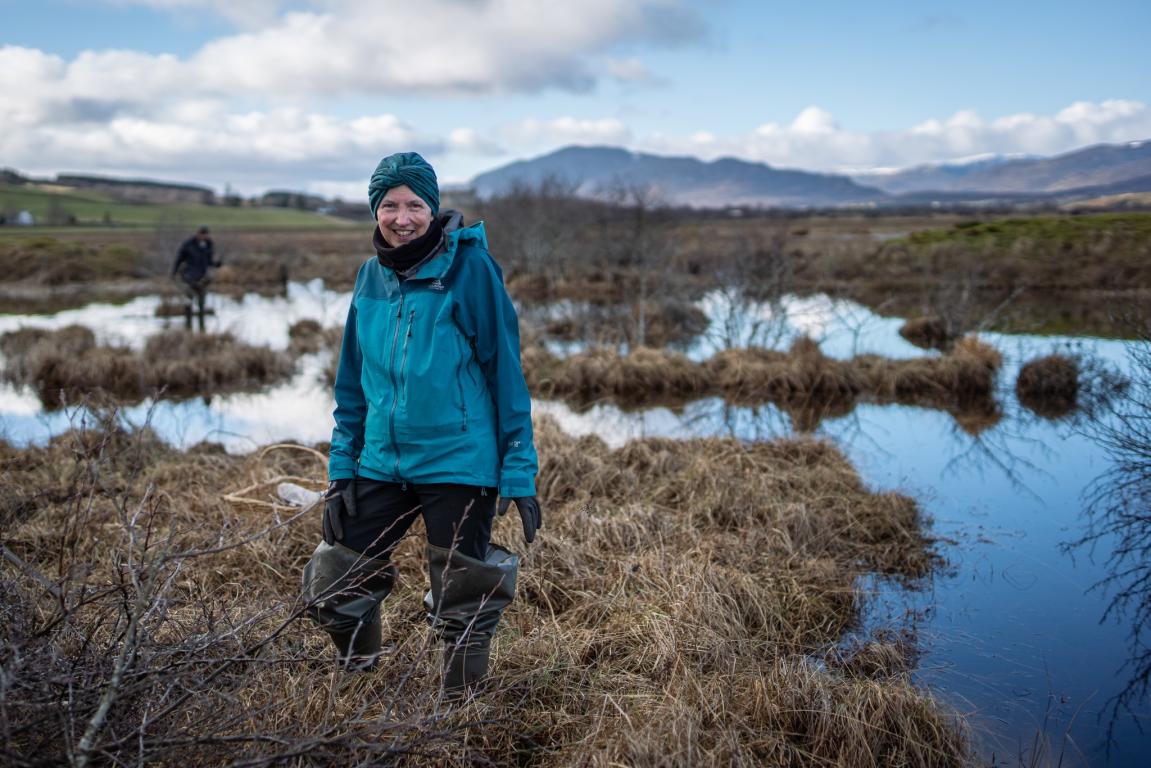 Helen Skuodas.
Helen Skuodas.Image provided by David Lintern
Helen Skuodas is a retired social worker and has lived in neighbouring Newtonmore for 22 years.
I’ve loved volunteering with the Curlew project at Insh this past year. It is almost on my doorstep, I’m doing something to save our struggling wildlife, working with a great team of people with a shared passion and benefiting my physical and mental health while engaging with nature. What’s not to like?
The day doing scrub control was her first time out with the team after major surgery. She usually does the counts – “It’s less boggy!”
Many thanks to Spirit 360 for helping to fund local slow journalism, and to the Curlew Life team at Insh Marshes for sharing their stories.